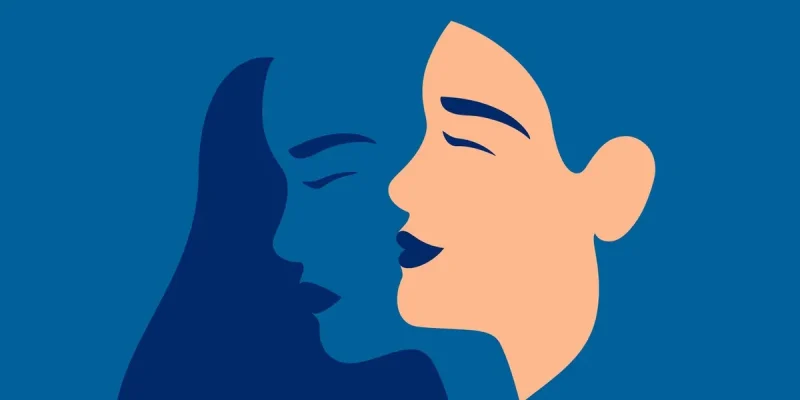Learn about the symptoms of bipolar disorder

October 10, 2023, is World Mental Health Day.
Medically reviewed by Rena Ferguson, M.D.
You’ve probably heard of bipolar disorder before. A number of celebrities like Britney Spears, Selena Gomez and Catherine Zeta-Jones have had very public diagnoses. But even with these famous cases, a lot of stigma still surrounds the condition. And much of what people think they know about bipolar disorder is steeped in stereotypes.
Knowing what to expect with bipolar disorder and having the resources and skills to handle it can help make all the difference, according to Ilana Cohen, M.D., a psychiatrist at The Retreat by Sheppard Pratt. “It is a chronic condition, but it’s one that can be really well-managed,” she said. “It’s important to recognize that it’s just part of your brain chemistry and think about how you’ll manage it over the course of your life.”
So, let’s clear up the misconceptions and learn the facts about bipolar disorder, a condition that affects over 7 million people in the U.S.
What is bipolar disorder and what causes it?
Bipolar disorder is a mental illness that used to be called manic-depression or manic-depressive illness. The condition is a mood disorder, which means it can cause changes in a person’s mood that can affect their ability to function and perform everyday tasks. Symptoms may involve depression, mania (expansive mood or irritability) or both, at different intensities and for different periods of time. These moods are different than just being extremely happy or extremely irritable. They cause problems for the person who has them or for those around them, are distinctly different from the person’s usual range of moods and last most of the day and for at least a week.
We don’t know what causes bipolar disorder, but there is a clear genetic component. “People are much more at risk if they have a first-degree relative with a diagnosis of bipolar,” Cohen said.
What are the types of bipolar disorder?
There are three main types of bipolar disorder:
- Bipolar I: involves a manic episode of over-the-top energy or irritability lasting at least a week and may require hospitalization.
- Bipolar II: involves hypomania, a less extreme form of mania, and a history of at least one major depressive episode.
- Cyclothymic disorder: involves less severe mood swings (compared to bipolar I and bipolar II) between hypomania and depression for two years. The person must never have had a manic episode.
Most people are diagnosed with bipolar disorder around the age of 25 but symptoms begin much earlier. Women are often diagnosed later in life.
Mood disorders including bipolar have a lower rate in Black communities, but there are questions about the accuracy of these rates. Major depressive episodes, a key signifier of bipolar II, are more persistent and severe among Black adults than white adults.
Some research points out that diagnostic differences toward Black people may result in under-diagnosis or misdiagnosis, which can have life-threatening consequences, especially since people with bipolar disorder are at a much higher risk for suicide than the general population. “Correct diagnosis is really important because SSRIs or antidepressants can make bipolar disorder worse,” Cohen said. “Mood stabilizers are the mainstay of medications for bipolar disorder.”
What are bipolar episodes and how long do bipolar episodes last?
With bipolar disorder, episodes of emotional disturbance tend to alternate between depression and mania or hypomania. Hypomania is a less extreme form of mania. “Mania or hypomania are periods of elevation in mood, but they differ,” Cohen said.
What’s the difference between a manic episode and hypomania?
- Manic episode: a week-long, elevated mood state with an abnormally happy mood that can include increased irritability, increase in grandiosity (an exaggerated sense of importance, ability or knowledge), risky behaviors and impaired sleep. Speech and thinking may become less clear and there may be psychotic episodes where you lose touch with reality.
- Hypomania: a four-day period with increased energy and focus and an out-of-character elevated mood but without an impairment to normal functioning.
Bipolar disorder is often associated with mania, but people tend to have more major depressive episodes than manic episodes. These depressive episodes last at least two weeks and can include feelings of despair, fatigue, lack of focus and loss of interest in activities. “We tend to think of mania with bipolar, but the burden of depression is high,” Cohen said. “And the cost of the depressive episodes increases as we age.” In general, bipolar does not get worse with age if treated, and manic episodes tend to lessen as we age. However, one study found that depression takes a greater toll on adults over the age of 60 with bipolar disorder. Untreated or poorly treated bipolar symptoms can lead to more frequent and harder to treat episodes.
Women and bipolar disorder
Research shows that women who have bipolar disorder experience more severe symptoms and reduced quality of life compared to men with bipolar disorder. For example, women with bipolar disorder are more likely to report panic disorder, PTSD, eating disorders and borderline personality disorder compared to men with bipolar disorder.
Women are also more likely than men to experience:
- Rapid cycling between lows and highs
- Depression caused by bipolar disorder
- Migraine attacks
- Drinking problems
- Thyroid disease
- Obesity from medications to treat bipolar disorder
- More intense symptoms because of premenstrual symptoms
How is bipolar disorder treated?
Anyone experiencing symptoms of bipolar disorder should contact their healthcare provider (HCP) immediately. Your HCP will usually refer you to a psychiatrist, psychologist or clinical social worker who specializes in diagnosing and managing bipolar disorder.
”Like many mental health conditions, bipolar disorder is not curable,” Cohen said. But your healthcare team can help you manage the symptoms. Treatment includes medication and lifestyle choices. “The best treatments for bipolar disorder are multifactorial,” Cohen said. “Medication has a large role to play. But you also want to ensure good routines, good sleep, good nutrition and a good medicine regimen. And learning to recognize warning signs is one of the most powerful tools you have.”
Stress and lifestyle changes can be triggers for bipolar symptoms. Substance use can also trigger or worsen bipolar disorder, Cohen said. So it’s important to keep in mind what’s happening in your life, what might trigger episodes and how you can proactively care for yourself during stressful situations.
Read: Why Are Women So Stressed? >>
Having support from others in your life who understand and help you stay on track makes it easier to manage your symptoms. “It’s hard to take medication and do the right things every day. Offering support and being a safe place goes a long way,” Cohen explained. “I have many patients with bipolar disorder who are incredibly successful, who are thriving and live great lives.”
If you or someone you know may be experiencing bipolar disorder, talk to your healthcare provider about your options as soon as possible.
If you or someone you know is having a mental health crisis, please call or text the Suicide and Crisis Lifeline at 988.
From Your Site Articles
Related Articles Around the Web








